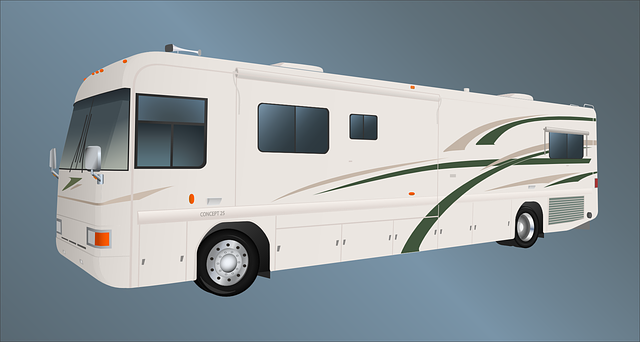When transferring your out-of-state vehicle to a new state residence, you must undergo the DMV's vehicle verification process, which includes a VIN number verification. This ensures that your vehicle's VIN matches its title and history records, complying with DMV standards. Locate an authorized DMV VIN inspection site to conduct a certified VIN verification using specialized equipment and trained personnel. A VIN inspection report confirming authenticity is necessary before you can register your vehicle in the new state. With over 300 DMV VIN inspection locations across the U.S., finding one should be convenient. During the inspection, your car's VIN is checked against its title and registration documents at the site, a crucial step for the DMV registration inspection process. To ensure a smooth transition, research the specific DMV VIN check requirements for your destination state, as these can vary. Being prepared with all necessary documents and understanding the VIN verification process, DMV VIN inspection locations, and DMV registration inspection procedures will facilitate a hassle-free move, ensuring your vehicle is legally registered in its new home state. Remember to verify the costs associated with VIN verification, as they may differ by state. Proactive research into the DMV VIN check requirements will help you navigate this process efficiently.
When relocating with your out-of-state vehicle, smoothly transitioning your car to your new home state is paramount. This article demystifies the DMV vehicle verification process, particularly the VIN inspection, which plays a crucial role in ensuring your car’s details align with DMV standards. We delve into locating authorized DMV VIN inspection sites, understanding VIN verification costs, and navigating the requirements for seamless DMV registration. Whether you’re moving across the country or just across state lines, our comprehensive guide will help you maneuver the VIN number verification process with ease.
- Understanding the DMV VIN Inspection Process for Out-of-State Vehicle Transfers
- Locating Approved DMV VIN Inspection Sites Across Different States
- Navigating VIN Number Verification Costs and Requirements for Registration
Understanding the DMV VIN Inspection Process for Out-of-State Vehicle Transfers
When transferring an out-of-state vehicle to your new residence within another state, the process for registration often requires DMV vehicle verification through a VIN inspection. This meticulous VIN number verification is a critical step to ensure that the vehicle’s identification number matches its title and history, aligning with the DMV’s standards. The VIN verification process begins with identifying an authorized DMV VIN inspection location. These locations are equipped and trained to perform this task accurately, providing a certified report confirming the authenticity of your vehicle’s VIN. This report is essential for completing the registration in your new state, as it ensures that there are no discrepancies or issues that could complicate the process. The DMV VIN inspection locations are spread across each state, so finding one close to you should be convenient. Once at the location, the VIN verification process involves a trained professional meticulously checking the VIN against the vehicle’s title and registration documents. This step is integral to the DMV registration inspection and must be completed before your new state will issue temporary tags or a new registration card for your car. To facilitate this transition, it’s advisable to familiarize yourself with the DMV VIN check requirements specific to the state you are moving to, as these can vary. This will ensure that your vehicle passes the inspection on the first attempt and that you adhere to all state-specific guidelines. Understanding the DMV vehicle verification process and preparing all necessary documents in advance will help make your transition to a new state with your vehicle go as smoothly as possible.
Locating Approved DMV VIN Inspection Sites Across Different States
When transitioning to a new state with your vehicle, it’s crucial to familiarize yourself with the DMV vehicle verification process, which includes a VIN number verification. This process ensures that your car’s Vehicle Identification Number (VIN) is authentic and matches the official records. To locate the nearest DMV VIN inspection sites across different states, start by visiting the official DMV website for the state you’re moving to. These websites often provide a directory of approved DMV VIN inspection locations, making it easier for you to find a facility that meets the state’s standards. The DMV VIN inspection locations are staffed with certified inspectors who can perform the VIN verification process, which is an essential step before registering your out-of-state vehicle in your new state. Each state may have its own specific DMV registration inspection requirements, so it’s important to verify these beforehand to avoid any delays or complications. The VIN verification cost can vary by state and inspection facility, but it is a necessary investment to ensure a smooth transition of your vehicle’s title and registration into the new state’s database. Understanding the DMV VIN check requirements in advance will help you navigate this process with confidence and ease.
Navigating VIN Number Verification Costs and Requirements for Registration
When transitioning to a new state with your vehicle, it’s crucial to understand the DMV vehicle verification process and associated VIN number verification costs and requirements for registration. The VIN inspection is a critical step in ensuring that your car’s Vehicle Identification Number (VIN) matches its title and history, which is essential for registering your vehicle in your new state. Each state has specific DMV VIN inspection locations where this process can be carried out by authorized inspectors. These inspectors will perform a thorough examination of the VIN to confirm its authenticity against the official database. This step not only ensures the accuracy of your vehicle’s information but also helps in preventing fraud and any future complications with registration or title transfer.
Before heading to a DMV VIN inspection location, it’s important to familiarize yourself with the VIN verification process requirements set forth by your new state’s Department of Motor Vehicles (DMV). These requirements can vary significantly from one state to another. Typically, you will need to present documentation such as the vehicle title, proof of insurance, and a valid driver’s license. Additionally, be prepared for VIN verification costs, which can differ by state. Some states may waive these fees if you have already paid a similar fee in your previous state within a certain timeframe. To navigate this process smoothly, it’s advisable to check the specific DMV VIN check requirements of your new state ahead of time. This preparation will facilitate a swift and hassle-free transition, ensuring that your vehicle is legally registered and ready to hit the road in its new home state.
When transitioning an out-of-state vehicle to your new home state, navigating the DMV vehicle verification process is a pivotal step to ensure smooth registration. This article has illuminated the critical aspects of the VIN inspection, from locating certified DMV VIN inspection locations to understanding the costs and requirements associated with VIN number verification. By following the outlined steps for the DMV VIN inspection process, you can confidently complete your registration and avoid potential complications. Remember, a meticulous VIN check is integral to the entire procedure, confirming your vehicle’s details align with DMV standards. With this information at hand, you are well-equipped to manage the transfer efficiently and legally.



